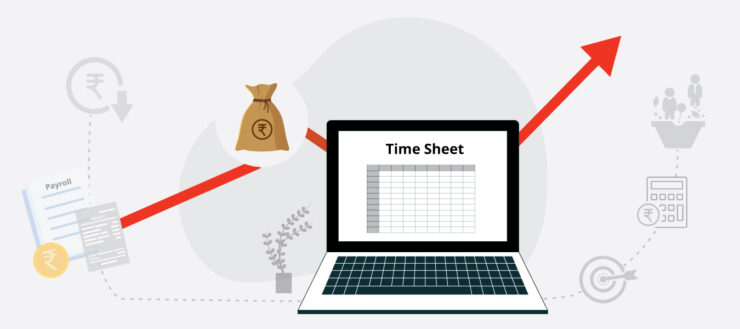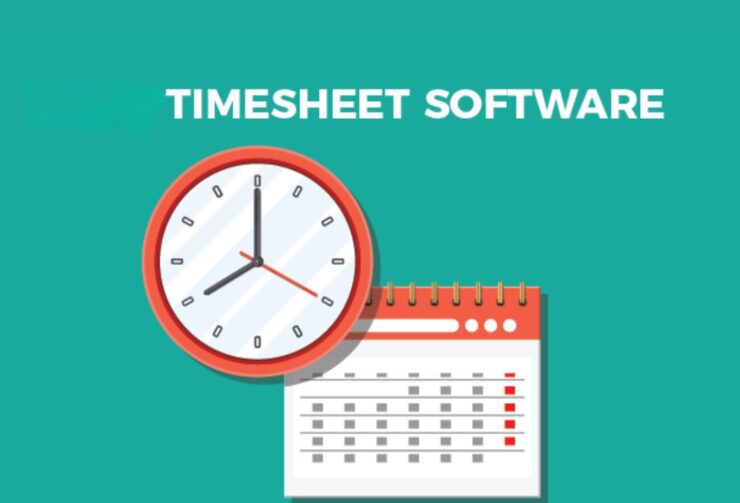Time tracking is critical in determining business success, as it directly influences productivity, efficiency, and financial health. Traditionally, businesses manually input and monitor each task, a time-consuming and error-prone process. Additionally, it couldn’t provide a comprehensive understanding of how employees were spending their time, making it difficult to accurately resource clients, price agreements, and maintain a healthy work/life balance for staff.
Timesheet software is a solution to these challenges. Let’s explore how it streamlines employee time tracking and revolutionizes the way your business operates.

Automated Time Tracking
Time tracking software automates the process of logging work hours, dramatically reducing room for errors and discrepancies often encountered with manual time tracking. Traditional time-tracking methods usually rely on employees to remember and log their hours at the end of the day or week, a process fraught with the potential for forgetfulness and human error. This can lead to inaccuracies in payroll and disputes over hours worked, which are not only time-consuming to resolve but can also diminish trust between employees and management.
On the other hand, automated time tracking leverages digital tools to record work hours in real-time. Employees might clock in and out using a computer or mobile device, ensuring their work hours are logged when they start and finish their tasks. This method significantly reduces the likelihood of errors and discrepancies, eliminating the guesswork and potential for forgetfulness associated with manual tracking.
Real-Time Data and Reporting
With timesheet software, you gain access to real-time data, enabling you to monitor project progress as it unfolds. This instant visibility allows you to quickly spot any deviations from the planned schedule or budget, enabling swift corrective actions. For instance, if a task takes longer than anticipated, you can instantly dive into the cause and decide if it’s necessary to allocate more resources to keep the project on course. This responsiveness was out of reach with traditional time-tracking methods, which depended on analyzing data after the fact.
Additionally, real-time reporting empowers you to adopt a more strategic approach to allocating resources. With live data on how your employees are using their time, you can make well-informed decisions on where to direct resources next. For example, if a project is ahead of schedule, you can shift resources to boost other areas that may be falling behind. On the other hand, if a project is in danger of missing its deadline, you can quickly assign extra resources to get it back on track. This adaptability ensures that resources are consistently utilized in the most efficient way, boosting your company’s overall productivity.
Improved Payroll Processing

Traditional methods of tracking work hours often lead to inaccuracies and discrepancies, causing unnecessary confusion and potential disputes over payroll. However, this type of software accurately records the time you and your employees spend working. This information is recorded in real-time and always accessible, ensuring that your payroll calculations are based on the most accurate and up-to-date information.
It also simplifies the process of calculating overtime, holiday pay, and other special compensations. You can program the software with your company’s specific rules and regulations, and it’ll automatically apply these rules when calculating pay. This saves you time and guarantees that your employees are compensated correctly and fairly for their work.
Enhanced Compliance with Labor Laws
This type of software helps your business comply with labor regulations by accurately tracking work hours and breaks. This precision helps you stay aligned with various labor laws, essential for avoiding legal and financial repercussions tied to non-compliance. By automating work time tracking, including overtime and required breaks, you can protect your business against compliance missteps.
Also, the software equips you with customizable alerts to prevent potential compliance issues. If an employee approaches the legal limit for hours worked within a day or week, you’ll receive an alert, enabling you to act by sending the employee home or adjusting their schedule to avert a violation. You can also set reminders for mandatory break times, ensuring compliance with rest period regulations.

Employee Self-Service Features
This type of software often offers self-service features, allowing employees to track the hours they’ve worked, submit requests for time off, and view their upcoming schedules. This level of autonomy not only simplifies the process from an administrative perspective but also promotes a sense of ownership and responsibility among staff members.
Additionally, this transparency builds trust within your workforce. Employees can see firsthand how their time is being allocated and recognized, eliminating any potential confusion or misunderstandings related to overtime, leaves, or work hours. This level of openness can significantly improve employee satisfaction as they feel more valued and understood.
Seamless Integration with Other Tools

Integration is a key feature of timesheet software, seamlessly integrating with other tools such as project management, payroll, and HR systems. For example, you can feed time data directly from your timesheet into project management tools, giving you a clearer picture of project timelines and task durations. The same data can be used by payroll systems to calculate accurate pay and by HR systems to manage PTO and ensure a healthy work/life balance for your staff.
This integration ensures data consistency and workflow efficiency and provides a more unified view of resource utilization and employee performance.
Conclusion
Timesheet software significantly streamlines employee time tracking, transforming it from a manual and error-prone task into a streamlined, efficient, and accurate operation. Many solutions are available, so compare each one and decide which system best suits your business’s needs.

